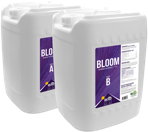Heavy metals
Share this Post
INTRODUCTION
Plants take in nutrients from soil environments through their root system in order to grow and develop. These soil environments contain elements that are essential, beneficial, or detrimental to plant health, including heavy metals. Heavy metals relevant to plants include:
- Essential plant nutrients – zinc, manganese, iron, copper, nickel
- Beneficial plant nutrients – cobalt
- Detrimental heavy metals – lead, cadmium, chromium, arsenic, mercury
When cultivating Cannabis, detrimental heavy metals can pose a two-fold risk. Uptake of these elements can hurt plant growth, resulting in lower yields or potency. Additionally, high concentrations of detrimental heavy metals in Cannabis flower pose a health risk to consumers.
Where do detrimental heavy metals come from?
Heavy metals are naturally occurring elements in soil, but can also enter soil or growing media through external sources. Water can be contaminated with detrimental heavy metals. Treatment of water with a filtration system can remove impurities. Industrial emissions, mining, and waste disposal are routes through which heavy metals can be deposited. Applications of certain pesticides and fertilizers can also result in the accumulation of heavy metals in soil. Heavy metals may be contaminants in many fertilizer products. The raw materials that make up fertilizer products are graded based on their purity. Raw materials in fertilizers that are of lower grades may be less expensive, but often carry heavy metals that can contaminate Cannabis flower. The raw materials that constitute the nutrient products from Rx Green Technologies are all rated at the highest purity available. This ensures a low risk of heavy metal contamination from our nutrient products. Soilless growing media may also be a source of heavy metals as it comes from parent materials that may contain these compounds. Our Clean Coco is thoroughly tested for heavy metals in each batch we produce, ensuring a clean, trustworthy product for cultivators.
Samples submitted at application concentration.
How can detrimental heavy metals get into Cannabis?
The presence of detrimental heavy metals in soil or growing media, water, or fertilizer does not guarantee that Cannabis will accumulate these elements. The ability of an element to move into a plant is dependent on both the identity of the element as well as soil conditions.
Soil pH and CEC
Soil pH and Cation Exchange Capacity (CEC) are major drivers of whether heavy metals can enter a plant. With most heavy metals, their availability increases as soil pH decreases. Important exceptions to this are arsenic and mercury. These elements tend to be more available for plant uptake as soil pH increases. Cation Exchange Capacity can be defined as the ability of a soil or growing media to hold positively charged ions. Most heavy metals exist as positively charged ions. As CEC increases, the substrate tends to hold on to heavy metals, decreasing their plant availability.
Mainland Minerals, 2014
Heavy Metal Identity and Concentration
Most heavy metals tend to be immobile in soil, but this can depend on the form of the metal that is present. Using chromium as an example, Cr (III) is the version preferred by plants, but is less mobile than Cr (VI), which is the form most harmful to human health. Although a heavy metal may be detected in soil, its ability to actually get into the plant may be low depending on its form and soil conditions. The ability of a heavy metal to get into a plant is also dependent on the concentration of the element in the soil. When heavy metals are present in very low concentrations, the likelihood of heavy metal contamination is also low. High concentrations of heavy metals signal that heavy contamination is more likely. Heavy metals that are also essential plant nutrients present in very high concentrations can pose a toxicity threat to plants.
Heavy Metal Uptake
If soil conditions and heavy metal identity and concentrations are right for plant uptake, these elements can end up in the plant. However, where do they go? Heavy metal accumulation studies in both hemp-type Cannabis and other plant species indicate that they are most likely to accumulate in the roots or leaves. The lowest levels of accumulation tend to be in flowers. The use of chelators such as EDTA can also increase heavy metal accumulation in plants.
Huang et al., 2017
Is Cannabis a hyperaccumulator?
Hemp-type Cannabis has been researched as a hyperaccumulator of heavy metals. A hyperaccumulator is defined as a plant that can be grown in a soil with high concentrations of heavy metals and absorb those metals without harming growth. Hemp-type Cannabis has shown the ability to accumulate heavy metals when grown in soils with high concentrations. In the published research, growth is sometimes harmed. Cannabis (>0.3% THC) has not been tested as a hyperaccumulator. The conditions under which Cannabis (>0.3% THC) is grown are vastly different than the previously conducted trials. With further study on relevant Cannabis strains under typical growing conditions, we may be able to more conclusively determine whether Cannabis is a hyperaccumulator.
How can a grower avoid failing for heavy metals?
Many states are now starting to require heavy metals testing for both recreational and medicinal Cannabis. Check with your state’s Cannabis regulatory body for more information. Heavy metals can pose a risk to consumers if they are present in Cannabis products. To ensure a safe product for consumers, growers can:
- Test substrates throughout the growing cycle for the presence of heavy metals
- Use nutrients that are made from high purity ingredients
- Use RO water, as heavy metals can be found in non-RO water.
- Avoid foliar nutrient sprays during the flowering cycle unless the ingredients are of high purity
- Take care with trimming and post-harvest processes
- Stainless steel found on trimming shears or in harvesting machines often contains lead, nickel or chromium
- These metals can shed onto Cannabis during post-harvest processing
Citations
Mainland Minerals, 2014. https://www.mainlandminerals.co.nz/cation-exchange-capacity/
Huang Z, Lu Q, Wang J, Chen X, Mao X, He Z (2017) Inhibition of the bioavailability of heavy metals in sewage sludge and biochar by adding two stabilizers. PLoS ONE 12(8): e0183617.


